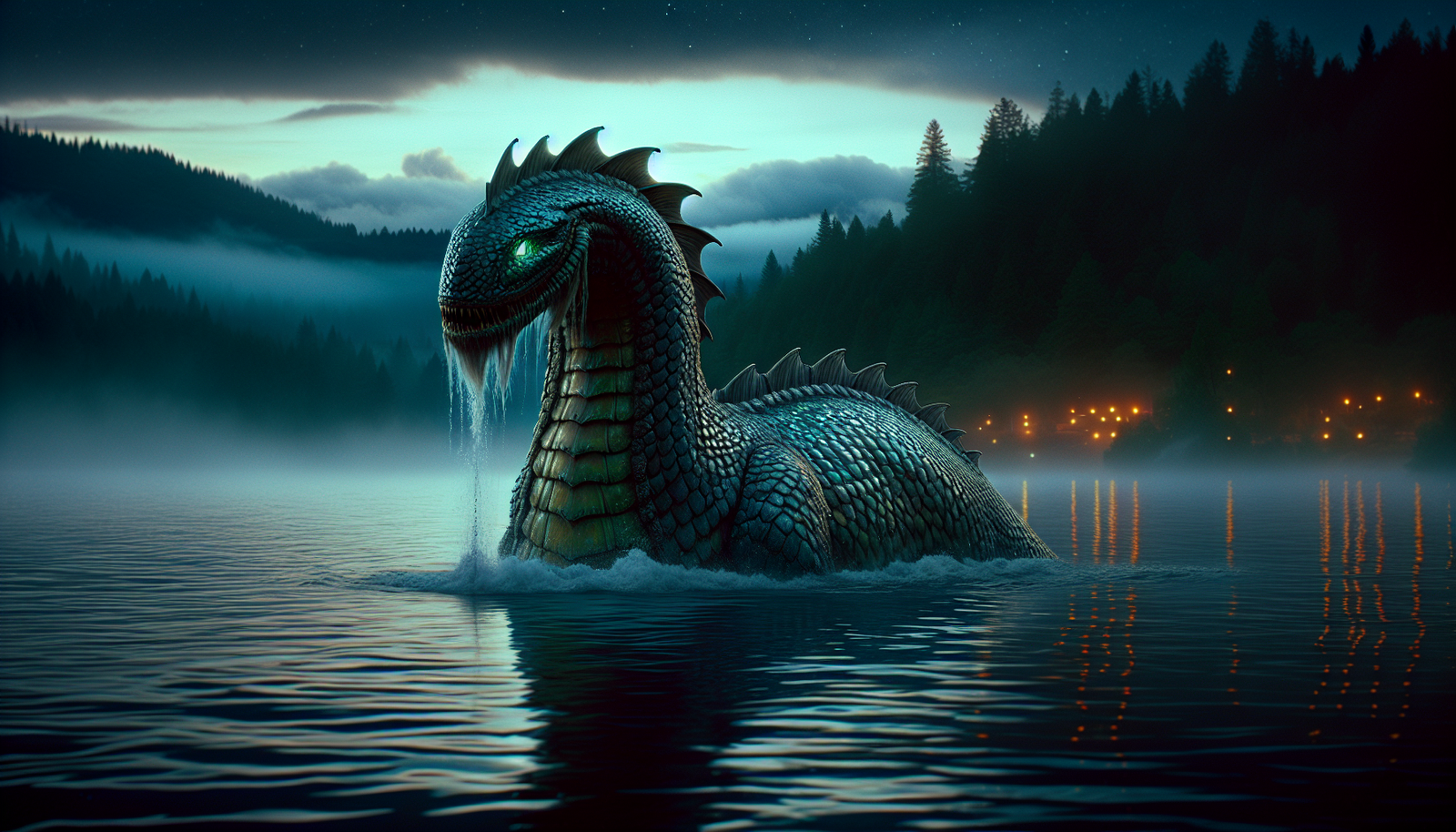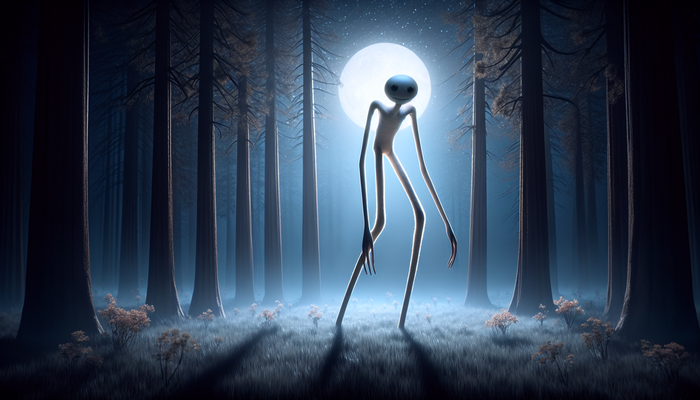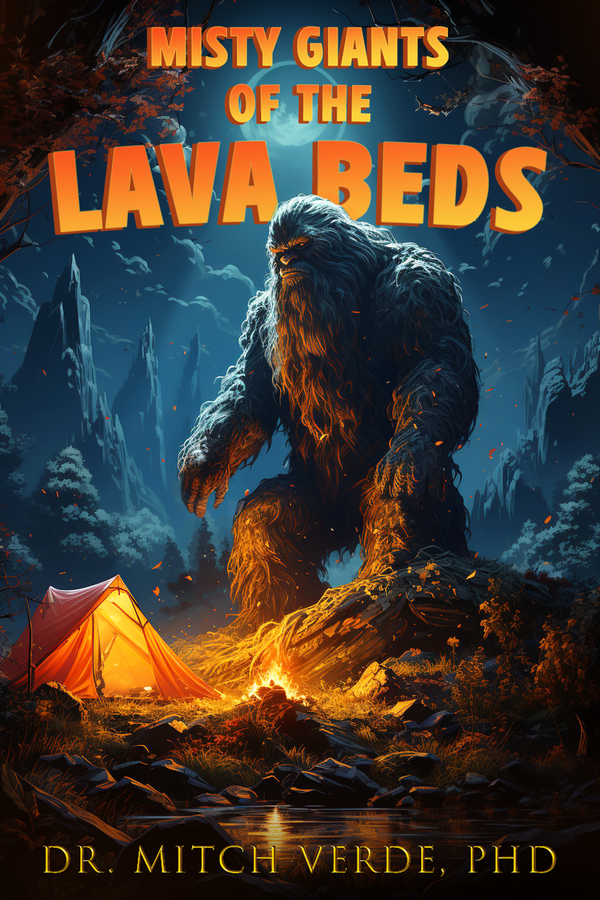Idaho's Elusive Cryptids

By Dr. Elizabeth Harper, Cryptozoologist and Biologist
The Allure of the Unknown
In the realm of cryptozoology, where science meets legend, few states boast a menagerie as diverse and captivating as Idaho. From the serpentine depths of its lakes to the rugged expanse of its mountains, the Gem State has long been a haven for creatures that dance on the fringes of our understanding. As a biologist and historian dedicated to unraveling the mysteries of the natural world, I find myself irresistibly drawn to the cryptids of Idaho—those elusive beasts that have captured the imaginations of generations, yet remain tantalizingly out of reach.
Idaho's vast wilderness, with its dense forests, winding rivers, and hidden valleys, provides the perfect habitat for creatures that defy conventional wisdom. It is a land where the line between myth and reality blurs, where ancient legends find new life in modern sightings and encounters. And it is here, in the heart of the American West, that I embark on a journey to unmask the truth behind Idaho's most famous cryptids.
Sharlie of Payette Lake: The Serpent of the Deep
Our first stop takes us to the shores of Payette Lake, a glacial jewel nestled in the mountains of central Idaho. It is here that the legend of Sharlie, a serpentine creature of immense size and mystery, has taken root in the collective imagination of the region.
The origins of the Sharlie legend can be traced back to the oral traditions of the Native American tribes who have called this land home for millennia. Long before Western settlers arrived, the indigenous people spoke of a powerful spirit that dwelled in the depths of the lake, a being that demanded respect and could bring both blessings and curses to those who encountered it.
The first documented sighting of Sharlie by Western settlers occurred in 1920, when a logging crew cutting ties near the lake reported seeing a large, log-like object moving through the water with uncanny speed and agility. This initial encounter sparked a wave of interest in the creature, and over the years, numerous witnesses have come forward with their own tales of the beast.
Perhaps the most compelling sightings occurred in the 1940s, when multiple groups of people claimed to have seen a creature that defied explanation. In 1944, witnesses described Sharlie as being 30-35 feet long, with a dinosaur-like head, humped back, and scaly skin. Two years later, in 1946, a group of 20 individuals reported watching in awe as the creature swam and dived in the lake, its massive form cutting through the water with effortless grace.
The fascination with Sharlie reached a fever pitch in 1954, when a local newspaper held a naming contest for the creature. The winning entry, submitted by a woman from Virginia, was "Sharlie"—a playful nod to the popular catchphrase "Vas you dere, Sharlie?" from a radio show of the time. From that moment on, the legend of Sharlie was cemented in the annals of Idaho folklore.
Today, Sharlie has become more than just a legend; it is a symbol of the enduring allure of the unknown and a celebration of Idaho's unique natural and cultural heritage. The creature's likeness can be found throughout the McCall area, adorning everything from souvenirs to ice cream sundaes. And while definitive proof of Sharlie's existence remains elusive, the impact of this cryptid on the region's identity is undeniable.
The Bear Lake Monster: A Tale of Fear and Fascination
Straddling the border between Idaho and Utah, Bear Lake is a vast expanse of turquoise water that has long been associated with a creature as mysterious as it is fearsome. The Bear Lake Monster, as it has come to be known, has captured the imaginations of locals and visitors alike for over a century, weaving a tale of fear and fascination that endures to this day.
The legend of the Bear Lake Monster can be traced back to the oral traditions of the Shoshone and Bannock tribes, who spoke of a serpent-like creature that lurked in the depths of the lake. According to these ancient tales, the monster was known to snatch unsuspecting maidens from the shore, dragging them down into the watery abyss never to be seen again.
It wasn't until 1868, however, that the legend of the Bear Lake Monster truly entered the public consciousness. That year, a series of articles penned by Joseph C. Rich, a local settler and correspondent for the Deseret News, thrust the creature into the spotlight. Rich's vivid descriptions of a massive, alligator-like beast, measuring 40-90 feet in length and covered in leathery skin, captured the imaginations of readers far and wide.
Eyewitness accounts poured in, each one more terrifying than the last. Some spoke of a creature that could outswim a horse, its powerful form cutting through the water at impossible speeds. Others described a beast with a head like a crocodile and eyes that glowed with an otherworldly malevolence. One particularly harrowing tale recounted the monster's attack on a lakeside camp, with the creature only retreating after being shot at by the terrified witnesses.
As news of the Bear Lake Monster spread, so too did the fear and fascination it inspired. Locals and tourists alike flocked to the shores of the lake, hoping to catch a glimpse of the legendary beast. Some enterprising individuals even began selling "monster skin" as souvenirs, capitalizing on the growing hysteria surrounding the creature.
However, the legend of the Bear Lake Monster was dealt a blow in 1888, when Joseph C. Rich himself admitted that his stories had been a fabrication—a clever hoax designed to boost tourism in the area. For many, this revelation shattered the illusion of the monster's existence, relegating it to the realm of tall tales and campfire stories.
But like any truly great legend, the Bear Lake Monster refused to be relegated to the dustbin of history. Sightings continued to trickle in over the years, each one adding a new layer to the ever-evolving mythos of the creature. In 2002, a particularly vivid account emerged, with a local business owner claiming to have seen a beast with "dark green, slimy skin and glowing red eyes" lurking in the waters of the lake.
Today, the Bear Lake Monster remains a beloved figure in local folklore, a testament to the enduring power of mystery and the human imagination. The creature's likeness can be found throughout the region, from the colorful murals adorning the walls of local businesses to the whimsical souvenirs lining the shelves of gift shops. And each year, the legend is celebrated at the Bear Lake Monster Winterfest, a lively event that draws visitors from far and wide to revel in the magic and mystery of this iconic cryptid.
The Paddler of Lake Pend Oreille: A Mystery in the Depths
Deep in the heart of northern Idaho lies Lake Pend Oreille, a vast, glacial lake whose depths hold secrets that have yet to be fully fathomed. And if local legends are to be believed, one of those secrets is a creature known as the Paddler—a beast as enigmatic as it is elusive.
Sightings of the Paddler date back to the 1940s, a time when the U.S. Navy was conducting secret submarine tests in the deep waters of Lake Pend Oreille. It was during this period that a group of witnesses claimed to have seen a large, unidentified animal breaching the surface of the lake, its massive form cutting through the waves with uncanny speed and agility.
At first, many dismissed these sightings as misidentified military craft, a reasonable assumption given the Navy's presence in the area. But as the years passed and the reports continued to mount, it became clear that there was more to the Paddler than met the eye.
One of the most chilling encounters with the creature occurred in 1977, when a young girl was allegedly attacked by an unknown beast near Sandpoint City Beach. The incident sent shockwaves through the community and prompted local journalists to dub the creature the "Pend Oreille Paddler"—a name that would stick in the annals of Idaho cryptozoology.
In 1984, the mystery of the Paddler caught the attention of James McLeod, a professor at North Idaho College. Intrigued by the growing body of evidence surrounding the creature, McLeod launched a full-scale investigation into the sightings, hoping to uncover the truth behind the legend.
Over the course of his inquiry, McLeod uncovered a wealth of information about the Paddler, from Native American legends that spoke of a powerful water spirit to modern reports of a creature that defied explanation. He even explored the possibility that the sightings could be attributed to abnormally large sturgeon, a theory that gained traction among some skeptics.
But for all his efforts, McLeod was unable to definitively prove or disprove the existence of the Paddler. The creature remained as elusive as ever, a phantom that seemed to slip through the cracks of conventional wisdom and scientific inquiry.
The mystery of the Paddler only deepened in 1985, when a teacher named Julie Green reported a chilling encounter with the beast. According to Green, she was out on the lake with friends when a massive wave, caused by a "gunmetal gray thing" undulating in and out of the water, nearly capsized their boat. The sighting left Green shaken and convinced that there was more to the Paddler than mere legend.
In 2007, the Paddler once again made headlines when a photograph surfaced showing what appeared to be a series of humps rising out of the water. The image, captured by a local newspaper photographer, reignited interest in the creature and sparked a new wave of speculation about its true nature.
Today, the Paddler remains one of Idaho's most enduring cryptozoological mysteries—a creature that continues to captivate the imaginations of locals and visitors alike. And while definitive proof of its existence remains elusive, the legend of the Paddler serves as a powerful reminder of the mysteries that still lurk in the depths of our world, waiting to be uncovered by those with the courage and curiosity to seek them out.
The Nimerigar: Legends of the Little People
In the rugged mountains and hidden valleys of Idaho, whispers of a race of diminutive, fierce warriors have echoed through the ages. Known as the Nimerigar, these legendary "little people" have long been a fixture of Native American folklore, their tales passed down from generation to generation as a testament to the enduring power of myth and mystery.
The Shoshone and Bannock tribes, in particular, have a rich tradition of stories surrounding the Nimerigar. According to these ancient tales, the Nimerigar were a race of vicious, cannibalistic beings, standing no more than two to three feet tall. Despite their small stature, they were said to be incredibly powerful, wielding tiny bows with poisoned arrows that could fell even the mightiest of foes.
The Nimerigar were described as having a mouth full of sharp, canine-like teeth, which they used to tear into the flesh of their enemies. They were also said to be extremely aggressive, attacking humans and other creatures without provocation or mercy. Some legends even suggest that the Nimerigar would bash in the heads of their own kind who had grown too old or sick to contribute to the group, then consume their bodies in a gruesome act of cannibalism.
Despite their fearsome reputation, the Nimerigar were not invincible. According to Shoshone and Bannock lore, the tribes eventually banded together to wage war against the little people, driven to action by the relentless attacks and atrocities committed by the diminutive warriors. In the end, the combined might of the tribes proved too much for the Nimerigar, and they were defeated once and for all.
While the Nimerigar are generally considered to be mythical figures, a tantalizing piece of physical evidence emerged in 1932 that suggested there may be more to the legend than meets the eye. That year, a pair of gold prospectors working in the San Pedro Mountains of Wyoming stumbled upon a tiny mummy, measuring just 14 inches in height.
The mummy, which was found in a seated position, had a wrinkled, leathery face that resembled that of an old man. Even more intriguing were its teeth, which were described as being overly pointed and sharp. Some researchers speculated that the mummy could be the remains of a Nimerigar, a theory that gained traction in certain circles.
However, the true nature of the San Pedro Mountains mummy remains a mystery to this day. Shortly after its discovery, the mummy disappeared, vanishing into the mists of history as suddenly as it had appeared. Some believe it was stolen, while others speculate that it may have been secretly reburied by Native American tribes who viewed it as a sacred artifact.
Despite the lack of concrete evidence, the legend of the Nimerigar continues to captivate the imaginations of those who hear it. The idea of a race of tiny, fierce warriors lurking in the mountains of Idaho and beyond has a certain allure, tapping into our primal fascination with the unknown and the mysterious.
And while the Nimerigar may never be proven to have existed in a literal sense, their enduring presence in the folklore of the region serves as a testament to the power of myth and the human imagination. In a world that can often seem all too explainable, the Nimerigar remind us that there are still mysteries waiting to be uncovered, secrets that may never be fully revealed but that continue to beckon us onward into the unknown.
Other Idaho Cryptids and Oddities
While Sharlie, the Bear Lake Monster, the Paddler, and the Nimerigar may be the most famous cryptids to call Idaho home, they are far from the only mysterious creatures said to roam the state's rugged wilderness. From the mountains to the forests, Idaho is a veritable hotbed of cryptozoological activity, with tales of strange beasts and otherworldly entities that have captured the imaginations of locals and visitors alike.
One such creature is the Wampus Cat, a legendary feline said to prowl the forests of northern Idaho. According to local lore, the Wampus Cat is a massive, six-legged beast with glowing eyes and supernatural powers. Some tales even suggest that the creature is capable of shape-shifting, taking on the form of other animals or even humans in order to lure its prey.
Despite its fearsome reputation, the Wampus Cat has become something of a beloved figure in the region, particularly in the town of Clark Fork. There, the local high school has even adopted the creature as its official mascot, with students and faculty alike embracing the legend of the Wampus Cat as a symbol of their community's unique character and heritage.
Another intriguing Idaho cryptid is the Malad Gorilla, a creature said to have been encountered near the town of Chesterfield in 1902. According to the tale, a group of children ice skating on a frozen pond were suddenly confronted by a massive, hairy "wild man" that emerged from the woods, brandishing a stick in a threatening manner.
The children fled in terror, and when a posse of local men went to investigate, they discovered a series of 16-inch-long tracks in the snow, suggesting that the creature was indeed real and not merely a figment of the children's imaginations. Some researchers have speculated that the Malad Gorilla may have been an early Bigfoot sighting, a theory that has gained traction among certain cryptozoological circles.
From Bigfoot to UFOs: Hangar 1 Publishing Has You Covered!
Explore Untold Stories: Venture into the world of UFOs, cryptids, Bigfoot, and beyond. Every story is a journey into the extraordinary.
Immersive Book Technology: Experience real videos, sights, and sounds within our books. Its not just reading; its an adventure.



























